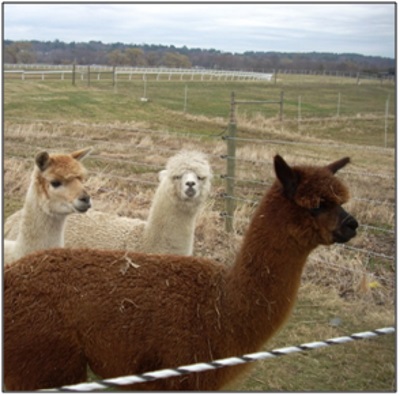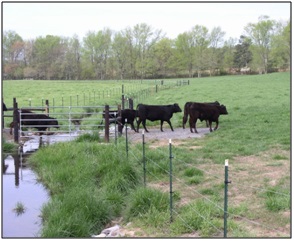Livestock Access Limitation Practices

To protect surface waters, their banks, and riparian zones from physical disturbance, it may be necessary to limit livestock access to these areas. Livestock access limitation practices include:
Fencing
Fencing may protect riparian areas which act as sediment traps and filters along the perimeters of surface waters and wetlands.
Livestock have a tendency to walk along fences. These paths can become bare channels which concentrate and accelerate runoff, causing a greater amount of erosion within the path and where the path/channel outlets into another channel. This can deliver more sediment and associated pollutants to surface waters. Fencing can sometimes have the effect of concentrating livestock in small areas, causing a concentration of manure which may wash off into a stream and cause surface water pollution. As such, proper erosion control practices and manure management should be implemented in combination with fencing.

Livestock Exclusion
This practice involves excluding livestock from an area not intended for grazing. Livestock exclusion may improve water quality by preventing livestock from being in the water, preventing access to steep or highly erodible banks, and by preventing animal waste deposition in surface waters. This practice prevents compaction of the soil by livestock and prevents losses of vegetation and undergrowth. This may maintain or increase evapotranspiration. Increased soil permeability may reduce erosion and decrease the transport of sediment and other pollutants to surface waters. By protecting existing vegetation, this practice also promotes shading along streams and may reduce surface water temperature.
Stream Crossing
This practice involves providing a stabilized area for livestock and farm machinery to cross a stream. This practice can provide a controlled watering access point for livestock, prevent bank and streambed erosion, reduce sediment and enhance water quality, and maintain or improve wildlife habitat. Stream crossing practices include bridge crossings, culvert crossings, and ford crossings. More information and design specifications can be found at the USDA Natural Resources Conservation Service
Stream Crossing Fact Sheet.
For more detailed information, also see
Streamside Livestock Exclusion, an excellent publication of the Virginia Cooperative Extension and Virginia Department of Conservation and recreation.